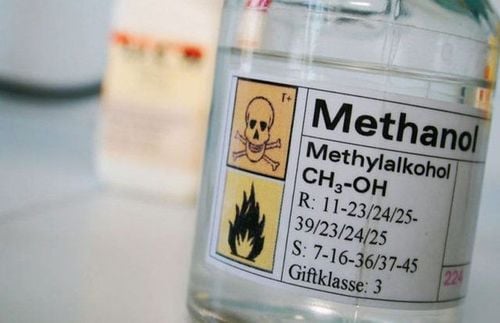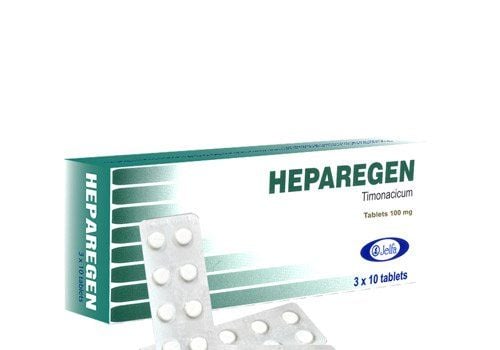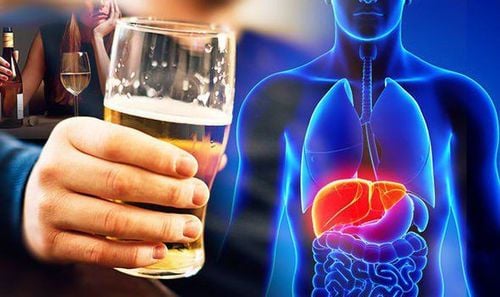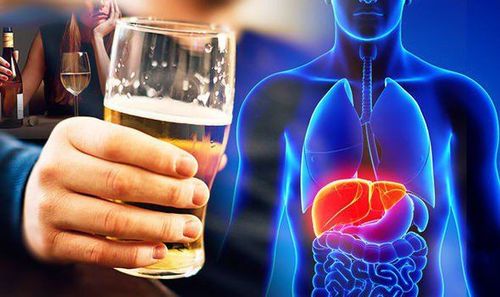This is an automatically translated article.
The article was written by Doctor Le Duy Cuong - Biochemistry Unit - Laboratory Department - Laboratory Department - Vinmec Times City International HospitalToxic metabolism of methanol in alcohol may appear slow. When a patient shows signs of alcohol intoxication, the patient should be ordered to test both ethanol and methanol simultaneously.
1. What is Methanol?
Alcohol has long been a familiar drink, associated with Vietnamese cultural life, but one thing cannot be denied that the harmful effects of alcohol are extremely terrible. Especially in the past time, the situation of alcohol abuse and alcohol poisoning tends to increase rapidly and complicatedly. Every year there are still many cases of hospitalization, even death from alcohol poisoning. Alcohol not only contains ethanol, but also contains a certain amount of methanol, aldehyde, and other toxic substances, which are more toxic than ethanol, seriously affecting the circulatory, respiratory and nervous systems of children. People. A domestic study has shown that hand-distilled white wine does not have any alcohol samples that exceed the specified methanol content. But all samples of mixed white wine exceeded the prescribed content standards. However, the recent cases of methanol poisoning have been recorded, most of the patients used alcohol made from industrial alcohol or fake alcohol of no origin with high methanol content, especially with alcohol addiction. alcohol arbitrarily bought antiseptic alcohol to mix to drink, leading to methanol poisoning.

Methanol có thể được sử dụng trong pha chế rượu hoặc cồn sát trùng
Methanol - commonly known as industrial alcohol - is the simplest alcohol with the formula CH3OH. In distilled spirits, methanol is derived from the breakdown of macromolecules during fermentation such as hemicellulose, pectin, lignin, and xylan. Mainly pectin degradation by pectin methylesterase. Methanol is a substance produced during fermentation. Methanol itself is less toxic, but its metabolites are very toxic. When entering the body, methanol is metabolized by Alcohol dehydrogenase - an enzyme that metabolizes alcohol in the liver, producing formaldehyde (33 times more toxic than methanol) causing clinical symptoms. Formaldehyde is then rapidly converted to formic acid (six times more toxic than methanol) by formaldehyde dehydrogenase, which inhibits cytochrome oxidase in the optic nerve and disturbs axonal conduction. In addition, formic acid is associated with the degree of acidosis and the degree of increase in the anion gap. Finally, formic acid is converted to CO2 and water. Methanol affects mainly the central nervous system with symptoms of intoxication, somnolence, stupor, convulsions or coma. The concentration of methanol in excess of the permissible limit can lead to poisoning for users. Vietnamese standard (TCVN 7043: 2013) stipulates that the methanol content in 1L of 100-degree ethanol is not more than 2000 mg.
2. Who is at risk of methanol poisoning?
From the beginning of 2017 to now, the number of methanol poisoning cases has increased dramatically. Many schools use alcohol of unknown origin, poor quality, the victims are mostly poor, students, young people are not aware enough.
Besides, tourists are also a high-risk group, especially during vacations when large amounts of alcohol are consumed along with uncontrolled drinking habits.
The ability to diagnose early and treat promptly is also an important factor in minimizing the harmful effects of methanol poisoning.

Người dùng sử dụng rượu không rõ nguồn gốc có thể gây ngộ độc methanol
3. Manifestations of Methanol poisoning?
Symptoms of intoxication usually appear within 30 minutes of ingestion but may be later, depending on the amount and whether the patient has taken ethanol or not (if symptoms appear more slowly).
There are usually two phases, a subtle phase (first few hours to 30 hours) and a subsequent apparent toxicity phase. Because symptoms are often subtle and mild at first (slight neuroleptic depression, sedation, analgesia) they are often overlooked or undetected in young children. Common manifestations are:
Nervous: methanol is a central nervous system depressant, similar to ethanol poisoning but at a milder level, causing sedation and apathy. Patients when coming to the hospital are often awake but very headache, dizziness, then may experience the following symptoms: forgetfulness, restlessness, mania, lethargy, confusion, coma, convulsions. When the poisoning is severe, there may be hemorrhage or infarction of the duckweed, brain drop. Eyes: At first, normal vision, then 12-24 hours blurred vision, double vision, feeling like there are clouds in front of eyes, photophobia, opacity, eye pain, double vision, central opacity, narrowing of vision field, reduced or lost vision, visual hallucinations (glare lights, dancing dots, tunnel vision...). A pupil that is poorly responsive to light or fixed dilated is a sign of severe toxicity and a poor prognosis. Ophthalmoscopy showed congestive papilledema, then retinal edema spreading along the blood vessels to the center of the fundus, blood vessels congested, papilledema, retinal hemorrhage. The signs seen on ophthalmoscopy do not correlate with the patient's visual findings but do correlate with the severity of the poisoning. Neurological sequelae: confusion, coma, parkinson's syndrome, cognitive deficits, transverse myelitis, polyneuropathy, optic disc atrophy, pseudo-oculomotor paralysis.

Người bị ngộ ngộ độc Methanol có thể rơi vào tình trạng hôn mê
Cardiovascular: vasodilation, hypotension and heart failure. Respiratory: weak breathing, stop breathing; Rapid, deep breathing if metabolic acidosis is present. Gastrointestinal: hemorrhagic gastritis, acute pancreatitis with epigastric pain, vomiting, diarrhea. Moderate or severe poisoning may alter liver function. Renal: acute renal failure, presenting with oligouria, anuria, red or dark urine if rhabdomyolysis is present. There may be back pain, trunk pain, stiff neck (like meningeal hemorrhage), muscle stiffness, skin may be cold, sweaty.
4. Quantitative blood methanol test
Small trace amounts of methanol are found in natural fruit juices, which are a non-toxic source of methanol because of its low content. Methanol is also a product of alcoholic fermentation. The methanol content in alcohol fermentation is also non-toxic. When ethanol and methanol are included in drinking alcohol, the toxic metabolism of methanol appears to be slower and manifests as contamination. Late intoxication, patients and physicians may only notice ethanol-type poisoning at first and easily miss the actual later stages of methanol poisoning. Therefore, for all cases of suspected general alcohol intoxication, simultaneous testing of both ethanol and methanol should be indicated.Threshold of toxic concentration of blood methanol > 20mg/dL, do at least 2 times/day, test at hospital admission, before and after dialysis, at the end of treatment. The threshold for severe poisoning is > 50 mg/dL, and concentrations > 150-200 mg/dL will lead to death if not treated promptly.

Các kỹ thuật xét nghiệm cần được thực hiện tại cơ sở y tế uy tín và chất lượng
For advice and to book an appointment, you can contact the Vinmec International General Hospital's clinic system nationwide HERE.














